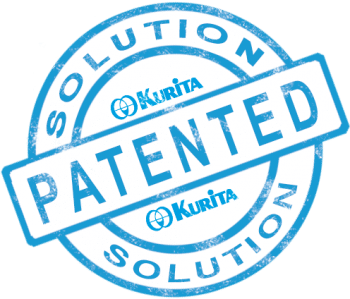Corrosion and salt fouling in oil refineries
Ammonium salt fouling is an omnipresent threat in oil refineries. It may lead to insecure operational conditions with high production losses. Salt deposition is frequently detected in fluid catalytic cracking main fractionator columns. Higher chloride concentrations in residue feedstocks can initiate ammonium salt fouling. Low main fractionator top temperatures of fluid catalytic cracking units will increase the fouling risk. Negative impacts are increased pressure drop, flooding of the top section and production losses. Heat recovery is essential at process units, which are operated with reactors. Typical process units, where ammonium salt fouling or corrosion occurs are hydrotreaters, hydrocrackers and catalytic reformers. Feed/effluent exchangers of hydroprocessing units and the stabiliser columns are equally affected.
Kurita's ACF Technology prevents fouling and corrosion.
The new ACF (Ammonium Chloride Free) technology uses the benefits of a chemical programme. ACF additives are liquid formulations with a very high base strength. ACF reacts immediately with strong acids such as hydrochloric acid. The strong base ACF displaces the weaker base ammonium chloride or ammonium bisulfide from its salts. The ACF reaction products have a neutral pH and very low corrosion potential. Compared to that situation an ammonium salt has a very high corrosion potential.
The technology also incorporates a high moisture absorption property (very hygroscopic). ACF salts can absorb moisture from the surrounding steam to keep the formed ACF salts liquid. This prevents ammonium salt fouling and corrosion in crude distillation units, catalytic cracking units (FCC), hydrotreaters, hydrocrackers, reformer units and other process equipment.
The innovative treatment is based on several actions:
- The very strong organic base reacts immediately with strong acids by forming a liquid ACF chloride salt.
- Ammonia is released from the ammonium salt by forming the corresponding liquid ACF salt.
- The ACF reaction product has a neutral pH, is very hygroscopic and can be removed easily with water.

What are the benefits that ACF Technology offers?
Saves water
Less wash water is required to remove salt deposits with reduction of the corrosion potential.
Saves energy
By avoiding fouling on the tube bundles of heat exchangers, less energy is required to maintain the defined temperatures.
Easy to apply
ACF products are liquid formulations that can be easily added to the system to be treated using dosing pumps.
Economical savings
Improved system operation with economic savings for water & energy. Lower costs for repair or maintenance work.

